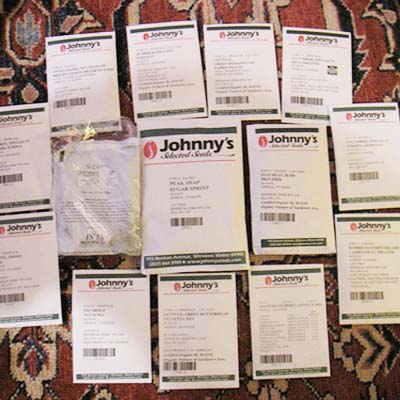Growing for Market in partnership with Johnny's Selected Seeds has created a library of expert information about growing and selling vegetables and flowers. Links in the article will take you to johnnyseeds.com.
Subscribe to Growing for Market for more great ideas about growing and marketing!
For more topics in the series, click on Market Farming Basics in the left column.

![]()
What to plant where
Planning your field or garden layout is one of the most challenging aspects of vegetable production because multiple goals must be accommodated in the plan. Rotations, planting dates, time to maturity, duration of harvest, and microclimates are have to be considered. You also need to know recommended crop spacing so you can calculate how many plants will fit. It's a complicated exercise, especially considering that it should change every year, so you need to design your next planting plan with an eye to the future.
Experienced growers find it helpful to divide their farms into "management units" as a way of reducing the complexity. A management unit on a large farm might be an entire field. On a small farm, it could be a block of beds. In a garden, each bed might be considered its own unit. The overall goal of your design should be to reduce work and waste while providing the best possible growing conditions for each crop. Here are some of the considerations that should guide your planning:
Figure out how much you want to grow of each crop, based on your market expectations and past experience. Then calculate how many plants you need to produce that quantity and how much space you need for that number of plants. Johnny's has several resources to expedite these calculations, such as the yield chart in the catalog and a new seed calculator online.

Crop rotations over time are extremely important in vegetable production success. Rotating crops breaks up insect, weed, and disease cycles and helps to balance nutrients across the farm. The first element of a crop rotation should be based on the botanical families of your crops. Don't grow plants in the same family on the same piece of land for at least three years; four or five years is better. Ideally, crops can be rotated through your management units, so the best system is to have four or five units for a long rotation.
Group crops by production practices such as cultivation practices, row covering, days to maturity, lines of drip tape needed, nutrient and water demand, and pest control. Keeping crops with similar requirements together will expedite tasks and give the field a neater appearance later in the season. For example, it might be quickest to plant lettuce and onions in the same bed because they can be planted at the same time in spring. But lettuce will be harvested within 45 days, whereas storage onions might be in the field for 100 days or more. The bed will need to be weeded and watered for the onions long after the lettuce is gone. Try to group crops that are planted and harvested at approximately the same time.
Locate crops according to harvest requirements. Some crops such as watermelons and sweet corn are so heavy you'll need a tractor or vehicle to move them out of the field. Others such as salad mix can be carried in a tub. Think about these and other access issues in planning your fields.
With all these nuances in mind, you can start mapping. Some growers use spreadsheets. Others use index cards, with one crop on each card. Others map out the next season on graph paper, then cut the units apart and reassemble them for the following season. However you do it, it takes considerable skill and vision to create a multi-year planting plan. But once accomplished, your plan will be a tremendous asset to your farm.
• Subscribe to Growing for Market for the latest news and ideas.
Reprinted from JSS Advantage December 2009







